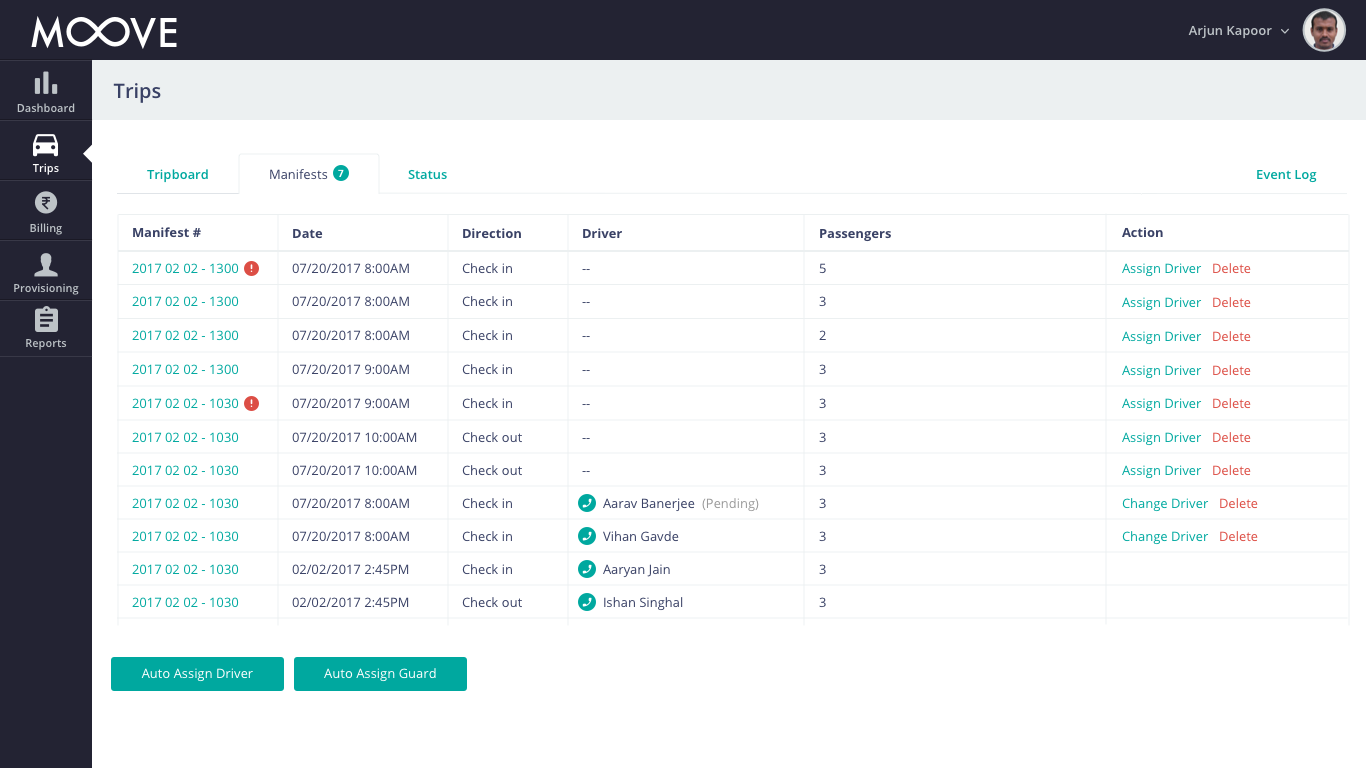MOOVE
Logistics in India is a challenge for every business. Transporting people and things in a reliable and safe manner is almost always done manually. MOOVE uses digital contracts to modernize this process for the largest logistics corporation in India.
Our goal is to achieve driver alignment, seamless workflows between users and customer-centric platform. We developed V1 product framing and designed end-to-end user experience across user types and devices (iOS, Android, Web). Throughout the process, worked closely with product owners and developers to launch two rounds of pilot and now serving thousands of users.
Team
1 UX Designer, 1 Design Director
Duration
12 months
We’re all in this together
A trip from home to work is not as easy as hopping into a car. For Moove, there are four different user types within the mix — operators who manage car fleet, employers who want more efficiency for their employees to commute, employees who want to be safe and convenient when commuting, and drivers who aspire to get more jobs.
Tripboard
One of the most important job for Operator is ensure riders’ security by monitoring active trips. In order to help them efficiently do their job, we designed a glanceable tripboard with all non-active, active, and completed trips all in one place. Trips with exceptions would bubble up to the top of the board so Operator can deal with the situation quickly.
Subway Map
For Driver and Rider app, having a stateful overview of the trip is important. The change of trip status helped them understand the current situation. The system only showed them what they currently need to do so there’s less ambiguity.
Automate It
This time, our goal was to make the platform scalable for all business model with automation. As for features, we designed a status tab so Operators could monitor the trip and check the activity update anytime. Also, we added ad-hoc trip request and shift edit for Riders.
Automated Clustering and Assignment
We designed an automated workflow to make work easier for the Operator. They can do their job by clicking one button instead of grouping employees manually and find the right driver to assign to. Automation enabled Operator to do more with less time.
Live Status
Tripboard was a powerful tool for monitoring trips, but it’s not enough. Operators have the need to check activity history when there were multiple exceptions or multiple operators handling the same problem. So we designed a status queue that followed the rule of only bubbling things that required human intervention.
Ad-hoc Request
According to the pilot data, many trips were ad-hoc. Riders request trips that were not on the schedule. So we added the capability to request for a new shift as a feature for Riders.
Field Study
We went to India for user feedback and phase 3 planning. It was very interesting to hear real users, which were the transport desk, talked about what they like about MOOVE and where they see improvement. It’s also fun to hang out with the engineering team whom we worked with online.
What users wanted the most were the live map and capabilities to edit trips. However, our original goal was to realize fully automated platform which could help users do less manual intervention. So our current plan is to accommodate users' need but keep our eyes on fully-automated system.
I also coded MOOVE website and push it live for potential customer to view.
Me with the poster of MOOVE in India
Had a great evening with dev team in India!
In this very first phase, we had to get the platform 80% complete in a very tight time frame with an international team and almost 100% unknowns. We eventually did pilots in Bangalore and New Delhi.









